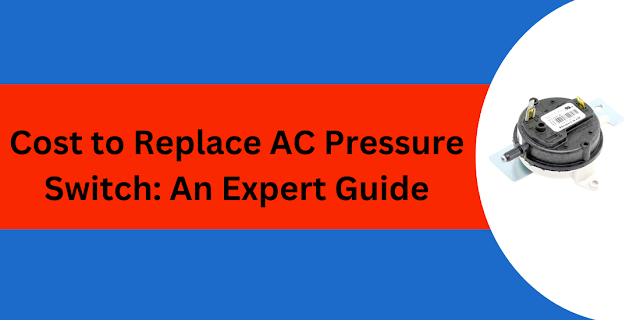Ruud Heat Pump Not Heating: Fix It Now
When the temperatures drop, having a reliable heating system is essential. It can be frustrating if your Ruud heat pump stops providing heat as expected. While heat pumps are known for their efficiency, they can still experience performance issues like any mechanical system. In this article, we’ll explore why your Ruud heat pump might not be heating properly and offer practical solutions to get it working again. Whether you're a seasoned homeowner or new to Ruud heat pumps, this guide will help you troubleshoot effectively.
Common Reasons & Fixes Why Your Ruud Heat Pump Isn't Heating
Here are the common reasons and fixes for why your Ruud heat pump isn't heating properly.
1. Dirty or Clogged Air Filters
Air filters play a crucial role in ensuring smooth airflow through the heat pump system. If the filter is full of dirt, dust, or debris, it hinders the flow of air, and the heat pump will have to work more than it should. Sometimes, the filter gets blocked and this may result in the system not heating enough or even overheating and switching off.
Fix: Examine and replace your air filter as needed. Every one to three months, especially during the heating season, make it a habit to inspect and replace the filter. This simple maintenance step can significantly improve system performance.
2. Frozen Outdoor Unit
A heat pump circulates heat into your house by extracting it from the surrounding air. During winter, there is a tendency for ice formation on the outside unit, which affects the efficiency of the heater. The heat pump cannot function effectively if ice builds up on the exterior coils.
Fix: Look for ice on the outdoor unit. If the unit is frozen, turn off the system and allow it to thaw out. Once the ice melts, the system should start working again. However, if this problem continues, it may be necessary to seek the services of an HVAC technician to check for other problems such as low refrigerant or airflow.
3. Low Refrigerant Levels
Refrigerant is the substance that allows the heat pump to absorb and release heat. If the refrigerant levels are low, then the system will not be able to warm your home as it should. One of the most probable reasons for low refrigerant is a leak in the system, which if not fixed, can cause further problems in the future.
Fix: Low refrigerant levels typically need to be handled by a specialist. To check the system and make sure the refrigerant level is appropriate and there are no leaks, speak with a qualified HVAC specialist. This fix is necessary to avoid further strain on your heat pump.
4. Faulty Thermostat
The thermostat is the control unit of the heating system, which determines when the heat pump should start and stop. If the thermostat is broken, it might not be able to tell the heat pump to turn on the heat by sending the right signal. The heat pump may blow cold air rather than warm air if the thermostat is malfunctioning or improperly adjusted.
Fix: Start by examining the thermostat's settings. Make sure the temperature is set higher than the room temperature and that it is in the heat mode. If your thermostat is digital, check for any error codes or signs of malfunction. Try replacing the batteries if necessary. An HVAC specialist may need to replace or fix the thermostat if it keeps breaking down.
5. Defective Reversing Valve
The reversing valve on a heat pump regulates whether the system is in heating or cooling mode. The heat pump may blow cold air instead of warm air if this valve malfunctions or becomes stuck in the incorrect position. Frequently, a malfunctioning reversing valve is a more complicated problem that needs expert care.
Fix: It is preferable to contact an HVAC specialist if you think the issue is with the reversing valve. It takes skill to replace or repair the reversing valve because handling it incorrectly could cause further harm.
6. Blower Motor Problems
The blower motor circulates the heated air throughout your home. If the blower motor is malfunctioning, you may not feel any warm air coming through the vents, even if the heat pump is operating. In some cases, the motor could be faulty or may have burned out entirely.
Fix: If the blower motor is the problem, then you will require the services of a professional technician to either repair or replace the motor. Feel for any unusual vibrations or put your hand near the vents to find out if the motor is running.
7. Improper Installation
A badly installed heat pump can cause several issues, including inadequate warmth. If the unit is not installed properly, it may not be able to hold the right temperature or it may not be able to pull the heat from the outside air.
Fix: If you think that your heat pump was not installed correctly, then you should consult an HVAC technician. They will check whether the unit is properly sized and whether it’s operating in optimal conditions.
Knowing typical issues that can be faced with Ruud heat pumps and basic troubleshooting can help solve heating problems. It is always advisable to perform routine maintenance to avoid future problems and ensure the proper functioning of the system. It is advised to hire a qualified HVAC professional for accurate diagnosis and repair if those suggestions prove ineffective.
Written by Allen Rode for Partshnc, your trusted source for high-quality HVAC parts, including water heater components, air conditioner parts, and heat pump solutions.




Simple steps, big improvement overall.
ReplyDelete